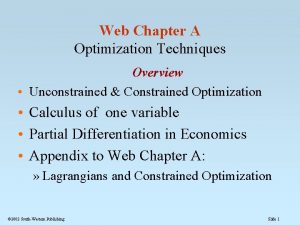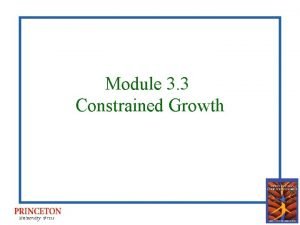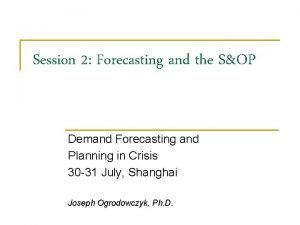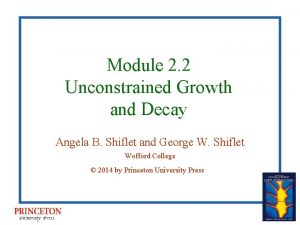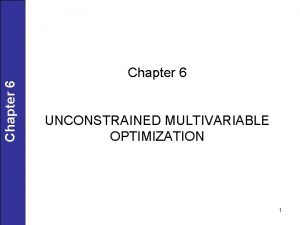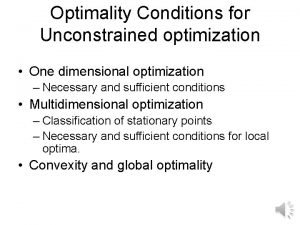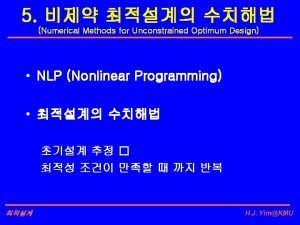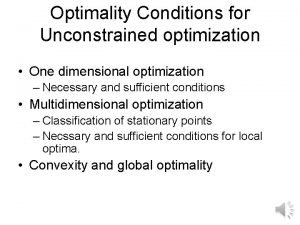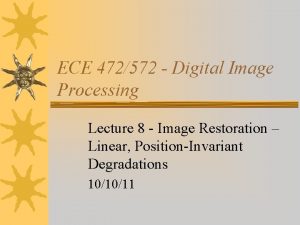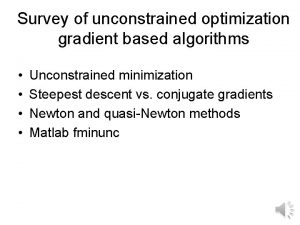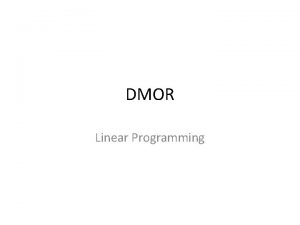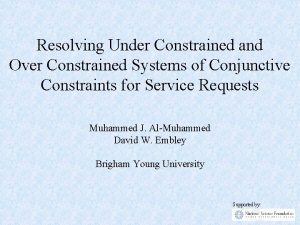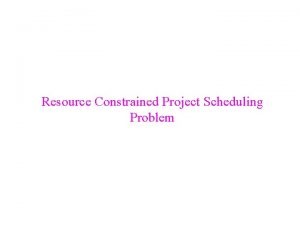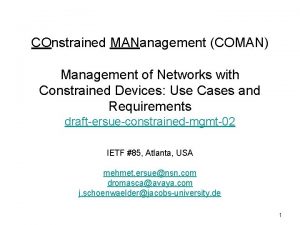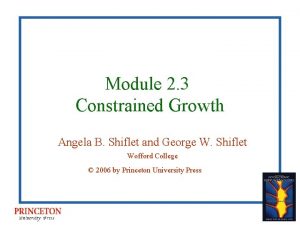Module 3 3 Constrained Growth Unconstrained Growth and














- Slides: 14

Module 3. 3 Constrained Growth

Unconstrained Growth and Decay of population (P) • d. P/dt = r. P • Limitations to unconstrained growth? • Carrying capacity (M) - maximum number of organisms area can support

Rate of change of population • • D = number of deaths B = number of births rate of change of P = (rate of change of D) – (rate of change of B)

Rate of change of population • Rate of change of B proportional to P • Rate of change of population P

If population is much less than carrying capacity • Almost unconstrained model • Rate of change of D (d. D/dt) 0

If population is less than but close to carrying capacity • Growth is dampen, almost 0 • Rate of change of D larger, almost rate of change B

• d. D/dt 0 for P much less than M • In this situation, f 0 • d. D/dt d. B/dt = r. P for P less than but close to M • In this situation, f 1 • What is a possible factor f ? • One possibility is P/M

If population greater than M • What is the sign of growth? • Negative • How does the rate of change of D compare to the rate of change of B? • Greater • Does this situation fit the model?

Continuous logistic equations

Discrete logistic equations

If initial population < M, S-shaped graph

If initial population > M

Equilibrium solution to differential equation • Where derivative always 0 • M is an equilibrium • Population remains steady at that value • Derivative = 0 • Population size tends M, regardless of nonzero value of population • For small displacement from M, P M

Stability • Solution q is stable if there is interval (a, b) containing q, such that if initial population P(0) is in that interval then • P(t) is finite for all t > 0 • P q
 Constrained and unconstrained optimization in economics
Constrained and unconstrained optimization in economics Andrea goldsmith wireless communications
Andrea goldsmith wireless communications Constrained nodes and constrained networks
Constrained nodes and constrained networks Constrained nodes and constrained networks
Constrained nodes and constrained networks Unconstrained decay
Unconstrained decay Unconstrained demand
Unconstrained demand Unimodal function
Unimodal function Unconstrained decay
Unconstrained decay Unconstrained multivariable optimization
Unconstrained multivariable optimization Optimality conditions for unconstrained optimization
Optimality conditions for unconstrained optimization Unconstrained optimization
Unconstrained optimization One dimensional unconstrained optimization
One dimensional unconstrained optimization Fminsearch
Fminsearch Unconstrained restoration
Unconstrained restoration Unconstrained def
Unconstrained def
